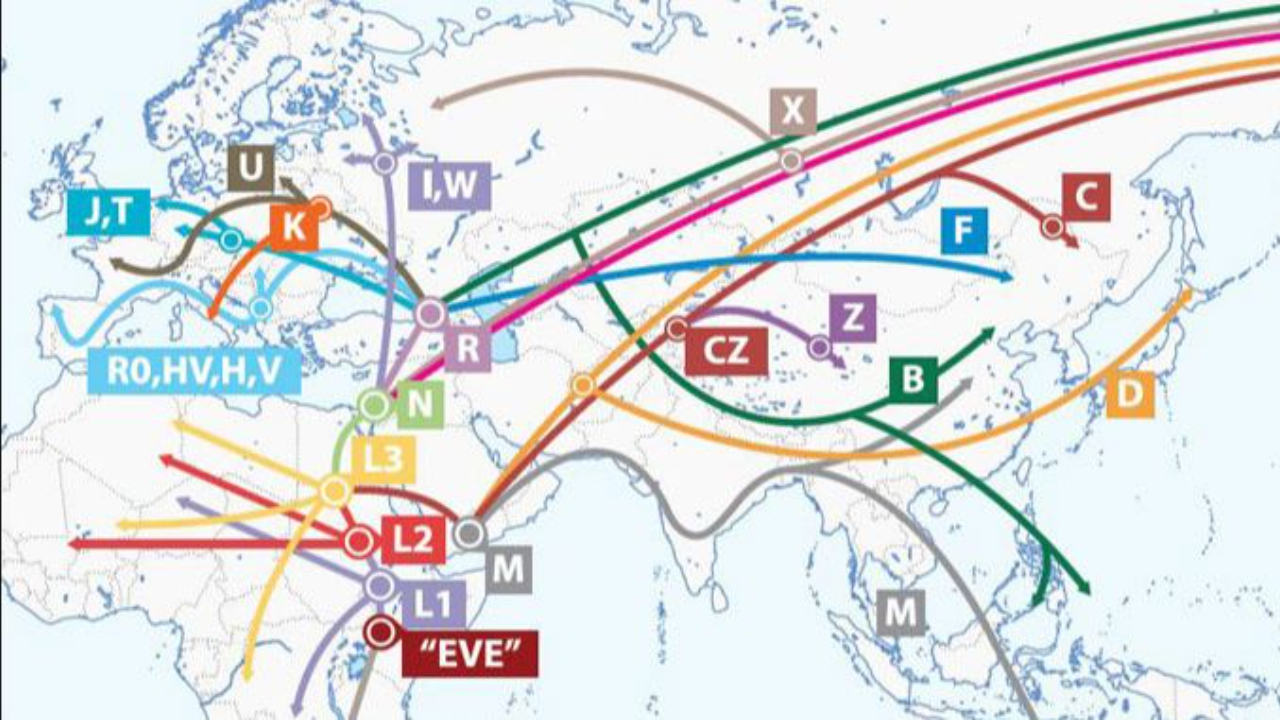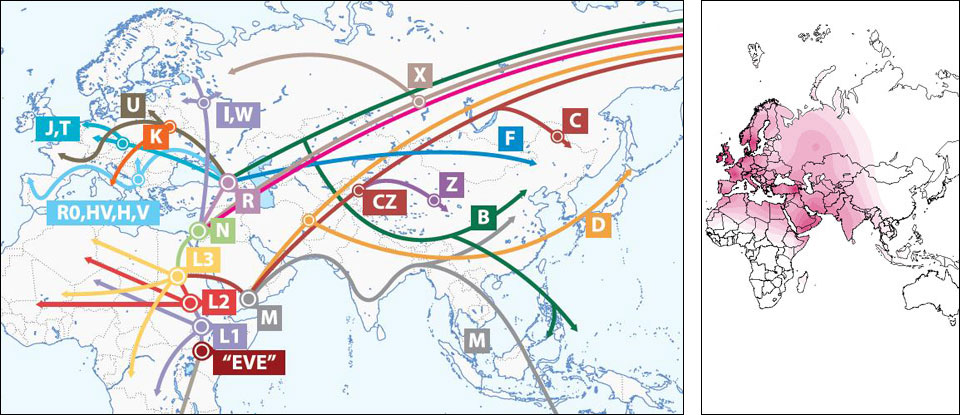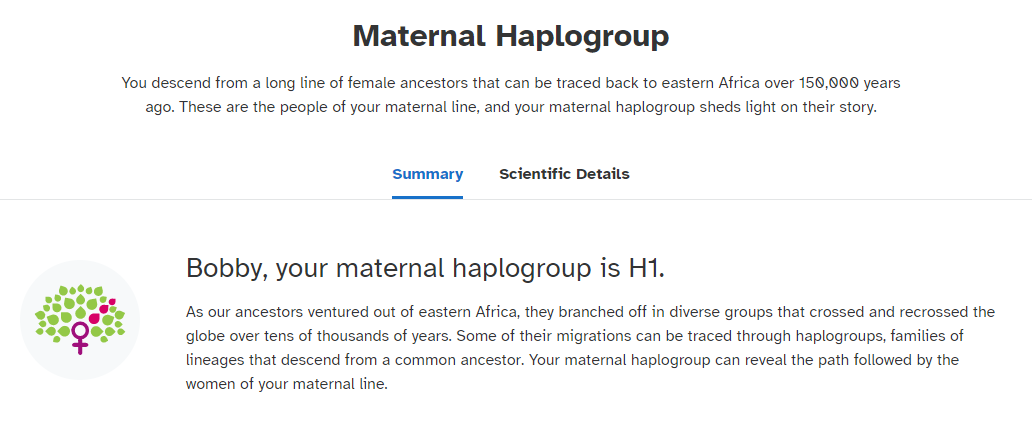Is Your Mitochondrial Haplotype Coupled Or Uncoupled?
Mar 06, 2023
***For the BEST Blue Light Diet tips, tricks and links, visit the Blue Light Diet Recommended Links Page***
Is Your Mitochondria Coupled Or Uncoupled And Why You Really Need To Start Caring....
A mitochondria haplogroup is a group of mitochondrial DNA (mtDNA) that traces back to a single common ancestor and the area in the World where they originated from.
There are many different mitochondrial haplogroups and your haplogroup was almost certainly inherited from your mother.
In these mitochondria haplogroups, there are different kinds of mitochondria that can determine gene expression and more. These are referred to as mitochondrial haplotypes and the two main mitochondrial haplotypes that concern you are known as coupled and uncoupled.
If your mitochondrial haplotype is coupled, that means it is tight and efficient.
If your mitochondrial haplotype is uncoupled, that means it is loose and less efficient.
Great Bobby, thanks for clearing things up lol.....
Ok.
Here's the important part for you to know.
How do your mitochondria produce energy?
One way is from eating food. When you eat food and it gets broken down to the atomic level, electrons and protons etc and then those atomic molecules get fed into your mitochondria electron transport chain.
Electrons release energy that "pumps" protons along a gradient and those protons trigger the spinning of ATPase which produces ATP in your mitochondria. (Among other things)
COUPLED HAPLOTYPES
Coupled mitochondria haplotypes are more efficient at producing energy, more efficient at using electrons to move protons across that gradient in the mitochondrial electron transport chain.
People who were usually born in an equatorial region or can trace their mitochondrial dna back to this type of region have tightly coupled mitochondrial haplotypes.
Why?
Humans first emerged in equatorial regions and those regions have higher temperatures and stronger sunlight! These humans were also connected to the ground 24/7. So Nature built their mitochondria accordingly. Since they were connected to so many different energy sources, their mitochondria were extremely efficient and didn't require so many electrons from food to pump protons and create lots of ATP and EZ water.
Another product of ATP creation in your mitochondria is heat.
If you live close to the equator, obviously you are hot enough already and your body does not need to generate much heat to survive. Because coupled haplotypes are so efficient at making energy, they burn less calories which means they make less heat.
Now lets compare this to uncoupled haplotypes.
UNCOUPLED HAPLOTYPES
Uncoupled or loose mitochondrial haplotypes are less efficient at creating energy than coupled haplotypes.
This means they need more electrons from food to supply the atomic energy to pump protons and create ATP and mitochondrial water.
Where do we find the people with the uncoupled haplotypes?
When people started to migrate out of equatorial regions, the sun got weaker and their environment got colder. The colder climate also meant less time connected to the ground.
The coupled mitochondrial haplotype is not very good at producing lots of heat so in order to stay alive in the colder climates, mitochondrial mutations occurred and produced uncoupled haplotypes. The mitochondria became less "efficient" at making energy in order to require more calories to make more heat to keep people warm and make more mitochondrial/EZ water to replace some of the energy the people used to get from stronger sun.
Uncoupled haplotypes need to eat more calories to make the same amount of ATP as coupled haplotypes and in the process of burning more calories they generate more heat!
So, the main differences between coupled and uncoupled haplotypes are....
Coupled mitochondria haplotypes are more efficient, generate less heat and need a smaller amount of food to create ATP.
Uncoupled mitochondrial haplotypes are less efficient and need more food to create heat and ATP.
What else does this mean?
In nature, you need less food in the summer time than you do in the winter time! The more time you are disconnected from the sun and earth, the more food you need to eat. And it also means, regardless of haplotype, the more connected to the earth you can become, the less food you will need to eat (anyone who needs to lose weight reread that sentence again! That is GOLD I just gave you.)
It also suggests that it may not be wise for people with coupled haplotypes to live in Northern climates with cold weather and weak sun and vice versa with uncoupled haplotypes. If you do, you must hack your environment to suit your mitochondria.
How do you figure out what kind of mitochondrial haplotype you have?
A couple ways....
ONE: Guess based on where your mother and her ancestors are from. If you are pretty sure your mother and her mothers came from a northern area like Europe then you have an uncoupled haplotype. If you are sure they came from Africa then you most likely have a coupled haplotype. The picture below shows all the different mitochondrial haplogroups represented by letters. Each letter is a single haplogroup.
So if you were in the "L1" mitochondrial haplogroup found in Africa, you would have a coupled haplotype. On the other hand, if you were in the "H" of "K" haplogroups that you see in Europe, your haplotype would be uncoupled. It is not an exact science but the haplogroups in equatorial zones have coupled haplotypes and the northern or southern haplogroups are uncoupled.

TWO: Use your genetic data. If you were dumb enough like many of us to give 23andMe your genetic info you can easily find out there and then combine with genetic genie to drill down even further and find out the latitude that is best for you to live. In 23andMe just look for your "Maternal Haplogroup" report. This will show you your most recent haplogroup which is what you want. 
Once you have this information you can take your raw genetic data and add it into Genetic Genie to really drill down and figure out the best latitude that your mitochondria are built for. You do this using our mitochondrial haplogroup and SNPs. An SNP is a type of gene mutation. Some of the SNPs to pay attention to for latitude living are VDR, MTHFR 1298 and 677, CBS and COMT.
Ok that is enough info for now. For a more in depth overview of Mitochondria and their haplogroups/types watch this Dr Doug Wallace video now. He is probably the biggest expert on Mitochondria in the world.
WANT TO LEARN MORE ABOUT LIGHT & HEALTH?
Sign up below now to get the free Blue Light Diet cheat sheet to light and health.
We hate SPAM. We will never sell your information, for any reason.

